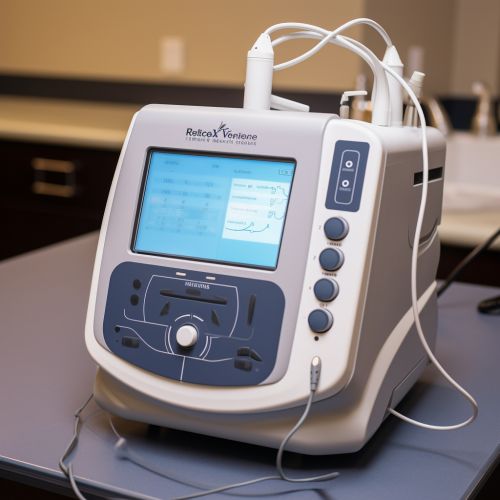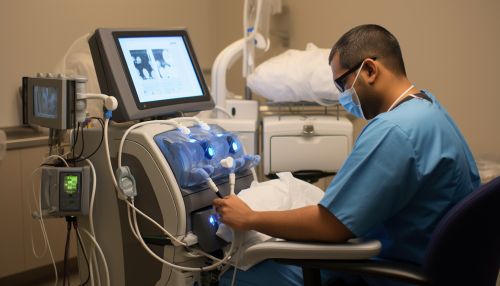Renal Replacement Therapy
Introduction
Renal Replacement Therapy (RRT) is a term used to encompass various modalities of therapy that replace the non-endocrine functions of the kidneys. It is used in the treatment of severe cases of acute kidney injury (AKI) and chronic kidney disease (CKD). The primary purpose of RRT is to manage fluid balance, remove waste products, and correct electrolyte imbalances in individuals with significant loss of kidney function.


Types of Renal Replacement Therapy
There are three main types of RRT: hemodialysis, peritoneal dialysis, and kidney transplantation.
Hemodialysis
Hemodialysis is the most common form of RRT. It involves the removal of waste products and excess fluid from the blood by passing it through a dialyzer, or artificial kidney. The blood is cleaned and then returned to the body. Hemodialysis is typically performed three times a week in a dialysis center, but can also be done at home with proper training and equipment.
Peritoneal Dialysis
Peritoneal dialysis (PD) involves the use of the patient's own peritoneum in the abdomen as a dialysis membrane. A catheter is surgically placed into the abdomen, and a special fluid is instilled into the peritoneal cavity. This fluid absorbs waste products and excess fluid from the blood vessels in the abdominal lining, and is then drained out. PD can be performed at home, and is typically done daily.
Kidney Transplantation
Kidney transplantation is the most definitive form of RRT. It involves the surgical placement of a healthy kidney from a donor into a patient with end-stage renal disease. The transplanted kidney takes over the function of the failing kidneys, eliminating the need for dialysis. However, kidney transplantation requires the use of lifelong immunosuppressive medications to prevent rejection of the transplanted organ.
Indications for Renal Replacement Therapy
RRT is indicated in cases of severe acute kidney injury or chronic kidney disease when conservative management strategies have failed. Specific indications include volume overload, refractory hyperkalemia, severe metabolic acidosis, symptomatic uremia, and certain drug overdoses.
Complications of Renal Replacement Therapy
While RRT can be life-saving, it is not without potential complications. These can include infection, bleeding, hemodynamic instability, electrolyte imbalances, and access-related issues. In the case of kidney transplantation, additional complications can include graft rejection, graft failure, and the side effects of immunosuppressive medications.
Conclusion
Renal Replacement Therapy plays a crucial role in the management of severe kidney disease. While it can be associated with significant complications, it can also greatly improve the quality of life for patients with end-stage renal disease. As technology and medical knowledge continue to advance, the efficacy and safety of RRT are likely to improve.
